M6.5 solar flare erupts from Region 3296, CME produced on May 7 heading our way
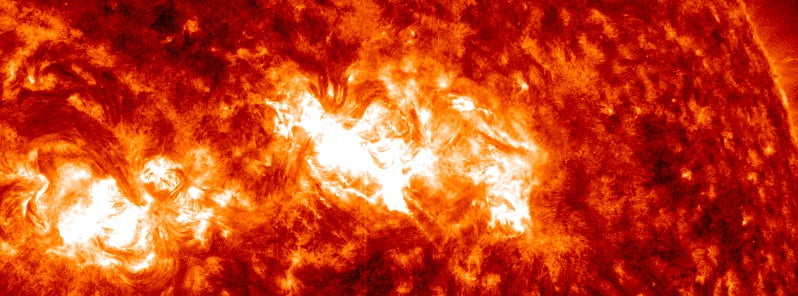
A moderately strong M6.5 solar flare erupted from Active Region 3296 at 03:54 UTC on May 9, 2023. The event started at 03:42 and ended at 04:05 UTC. This was the 12th M-class solar flare since M4.3 on May 3. It was followed by M1.2 at 06:13 UTC, also from Region 3296. The CME produced on May 7 was modeled and analyzed and the likely result is impact to Earth late on May 10 to early May 11.
A Type II Radio Emission with an estimated velocity of 641 km/s was registered at 03:53 UTC. Type II emissions occur in association with eruptions on the sun and typically indicate a coronal mass ejection (CME) is associated with a flare event.
In addition, a 10cm Radio Burst, lasting 6 minutes and with a peak flux of 360 sfu, was associated with the event. A 10cm radio burst indicates that the electromagnetic burst associated with a solar flare at the 10cm wavelength was double or greater than the initial 10cm radio background. This can be indicative of significant radio noise in association with a solar flare. This noise is generally short-lived but can cause interference for sensitive receivers including radar, GPS, and satellite communications.
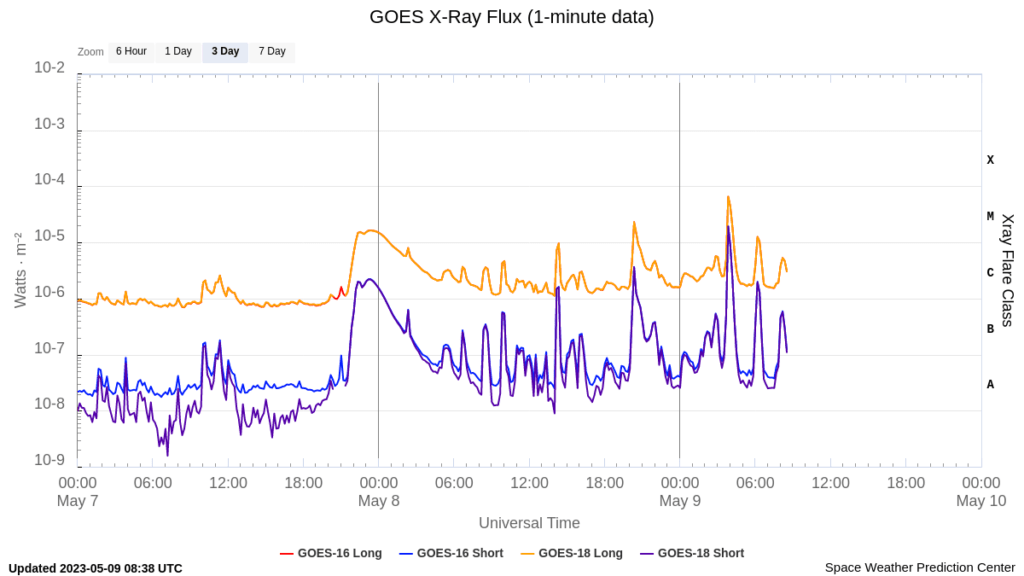
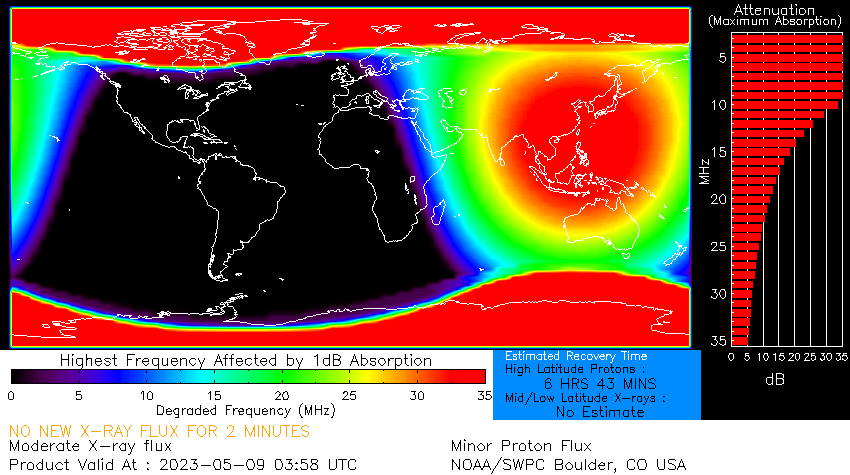
The location of Region 3296 (beta-gamma) still favors Earth-directed CMEs.
The region underwent growth in the intermediate section and some decay in the leader area over the past 24 hours. The mixed polarity signature strengthened, nearly developed a delta signature, and was the source of multiple C-class flares, including the largest of the period, an M2.3 flare at 20:25 UTC on May 8.
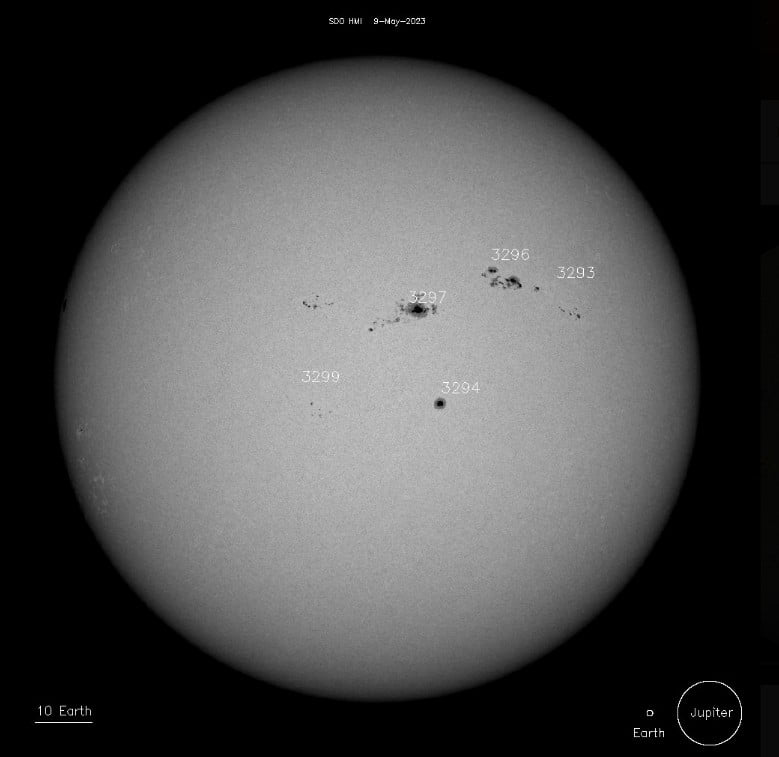
The partial halo CME first detected in NASA SOHO/LASCO coronagraph imagery at 23:12 UTC on May 7 UTC produced by a long-duration M1 flare late May 7 was analyzed and modeled several times. The concurrence is a likely Earth-directed component to this CME from late May 10 to early May 11. However, there is a disparity in model results regarding flanking influences or a more pronounced geoeffective arrival.
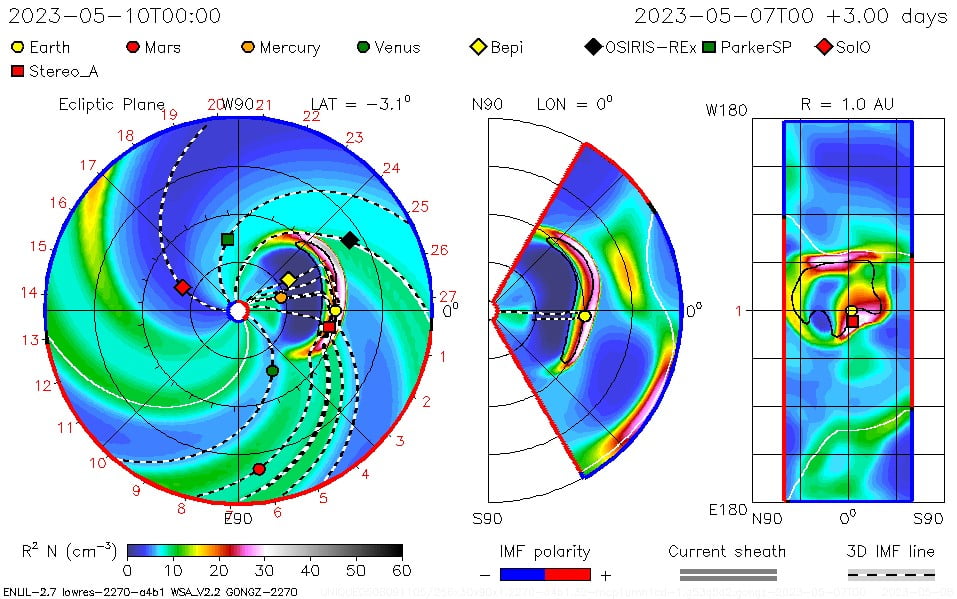
The greater than 10 MeV proton flux reached S1 – Minor storm levels at 11:50 UTC on May 9 and the storm is still in progress. A general decline in levels is anticipated and sub-S1 levels are likely by May 10, with a chance that S1 levels may still be occurring.
Continuing, gradual decrease in flux is expected and a return to background conditions, albeit elevated levels, are anticipated on 11 May. There is also a slight chance that S1 levels may still be reached. There is also a risk of a re-enhancement ahead of a CME arrival later on May 10 to early May 11. The greater than 2 MeV electron flux is expected to continue at mainly normal-moderate levels, with a chance of high levels in response to the recent CH HSS and CME influences.
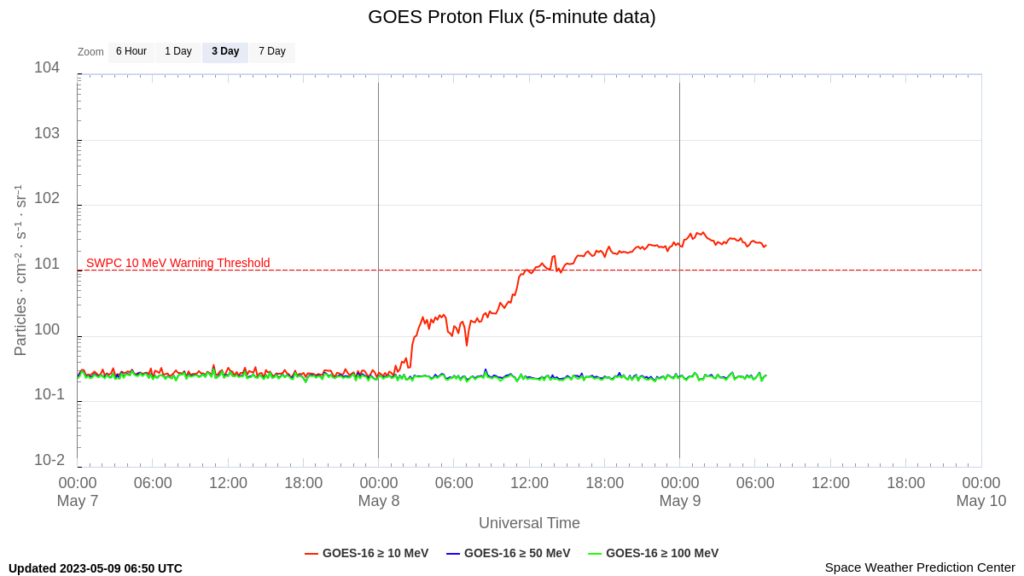

Solar wind parameters in 24 hours to 00:30 UTC today were indicative of weakening CME influences (from the previous CME activity) and continuing, unsteady coronal hole high speed stream (CH HSS) effects. Total IMF strength began the period in an enhanced state, with a peak of 12 nT at 00:10 UTC. The total field declined shortly afterward and was at 4 – 6 nT later in the period. The Bz component was in a pronounced southward direction when the period began, with a maximum deflection of -12 nT, but shifted mainly northward by 00:46 UTC on May 8, however, brief southward deviations still occurred. Solar wind speed was unsteady between mainly 450 – 500 km/s most of the period, but briefly escalated to nearly 550 km/s between 15:00 and 18:00 UTC on May 8, before it declined. The phi angle was variable, but was predominantly positive from about 02:00 to 13:30 UTC on May 8.
“It remains unclear whether the anticipated, final CME of anticipated arrivals has passed clear or still may be a factor early on May 9,” SWPC forecasters said. “Regardless, CH HSS effects are likely to continue and the disturbed, enhanced, and variable solar wind state is still anticipated on May 9, with an unsteady return towards a more ambient, background-like state as the day progresses.”
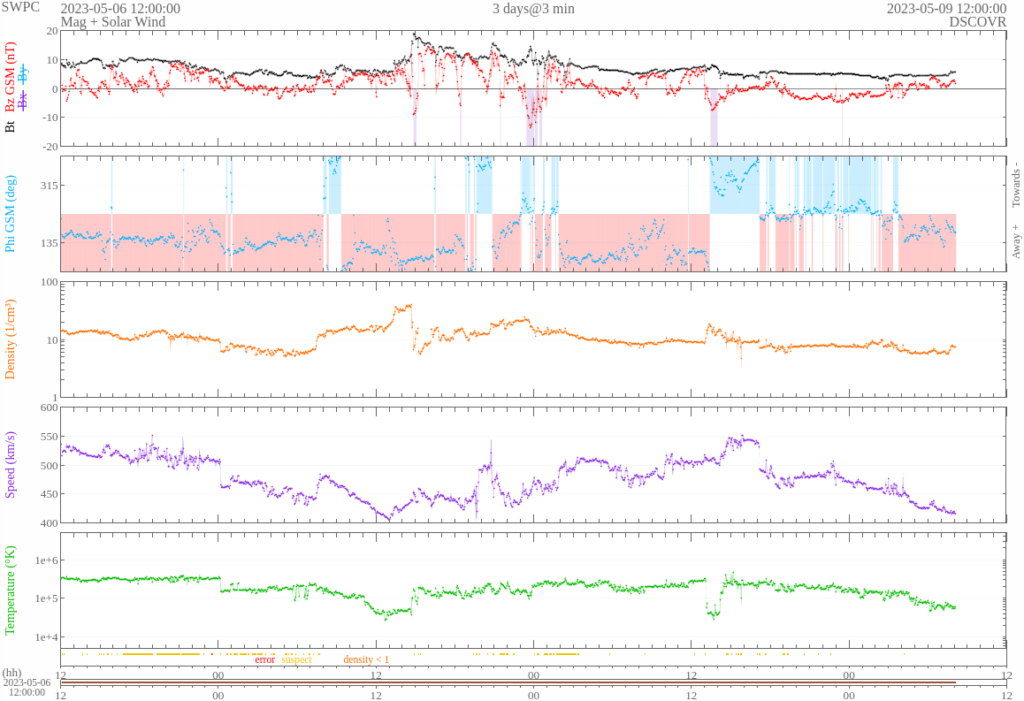

A slow solar wind regime is anticipated on May 10 until later in the day, when enhancements are likely due to the approach or shock arrival of the flank of the CME produced on May 7. Most material is anticipated to pass ahead and north of Earth’s orbital position, however, glancing blow influences are possible. Any CME-related disturbances are anticipated to continue and intensify on May 11.
The geomagnetic field reached G1 – Minor storm levels between midnight and 03:00 UTC on May 8 in response to combined CME and CH HSS effects. Quiet to active levels were observed for the remainder of the day as solar wind conditions weakened.
Mainly quiet to active levels are expected on May 9, with the likelihood of an isolated, early G1 – Minor storm period still possible due to the disturbed solar wind field. A return to mainly quiet to unsettled levels is expected most of May 10, however, CME influences later on May 10 and into May 11 are likely to escalate responses to active and G1 storm levels, with a chance of isolated G2 – Moderate storms and slight chance of G3 – Strong levels.
References:
1 Forecast Discussion Issued: 2023 May 09 0030 UTC Prepared by the U.S. Dept. of Commerce, NOAA, Space Weather Prediction Center
Featured image credit: NASA/SDO AIA 304. Acquired at 06:11 UTC on May 9, 2023


Commenting rules and guidelines
We value the thoughts and opinions of our readers and welcome healthy discussions on our website. In order to maintain a respectful and positive community, we ask that all commenters follow these rules.